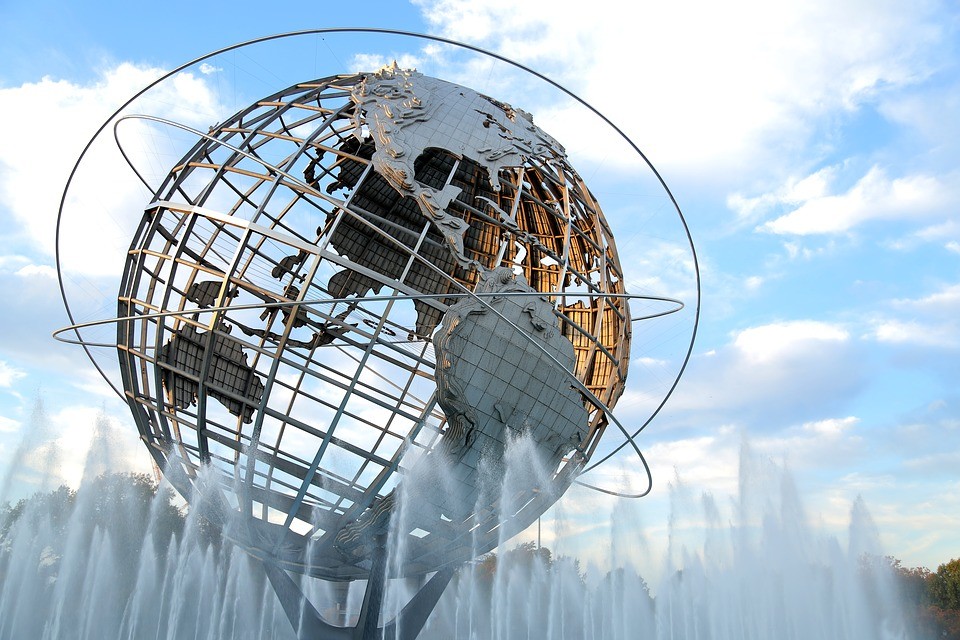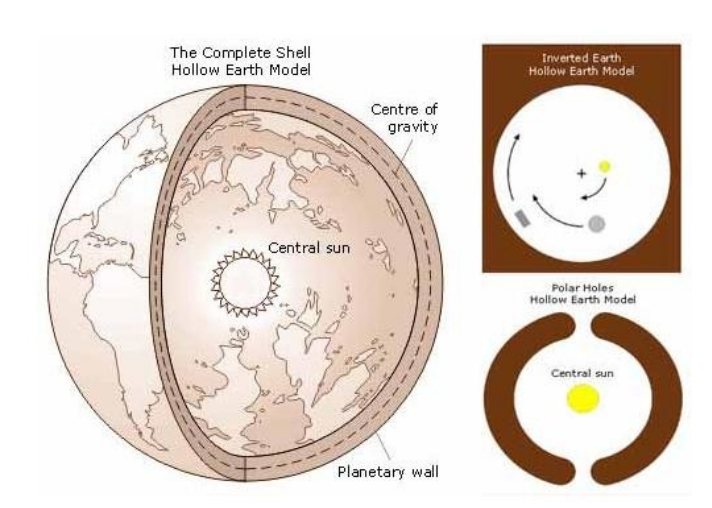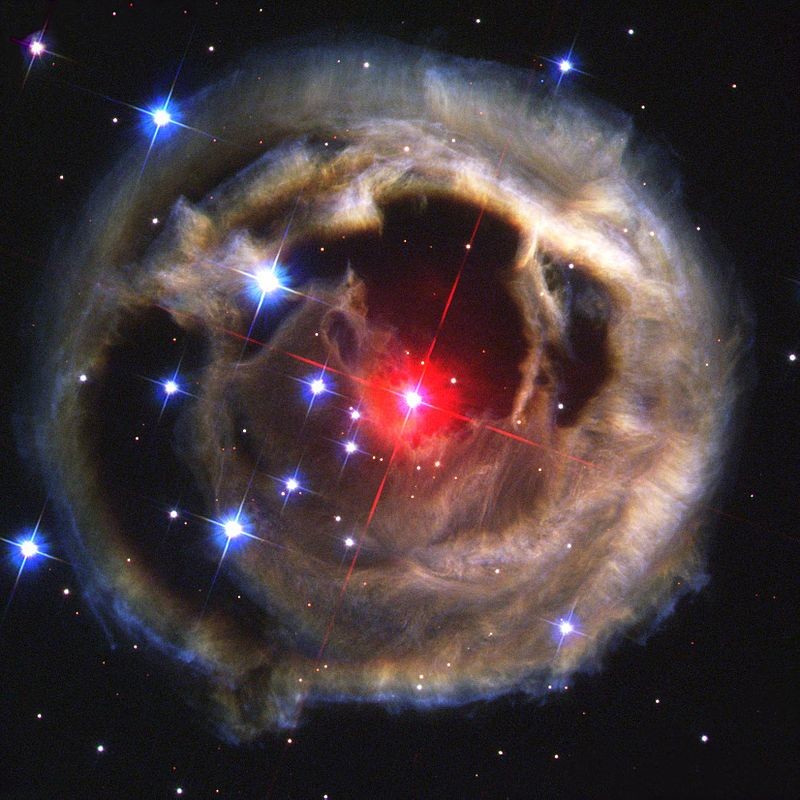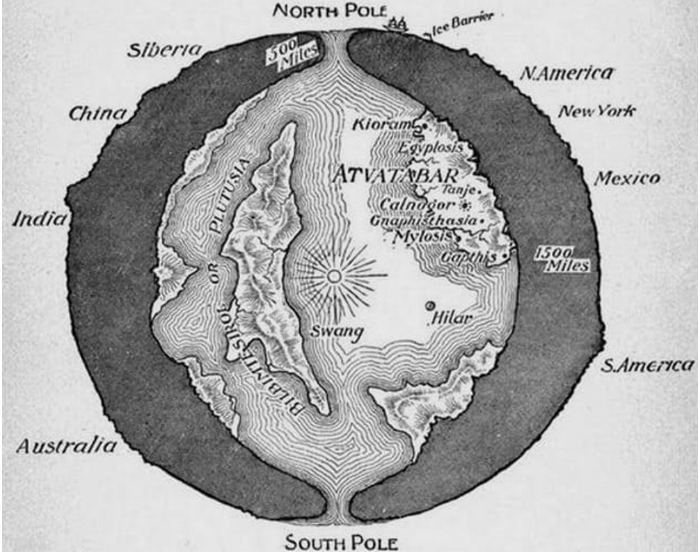
One day you go to the hairdresser’s and, while you wait for your turn, you listen to how the hairdresser explains with hair and marks something that, although you had read it in passing on occasion, you would never expect to see live and direct. “Well, I’ll tell you. Look, the Earth is hollow .”
And so, with a few similar words and 20 minutes of development, it was how the theories and movements around the hollowness of the Earth came into our lives. And what a shock. One expects to hear these things on mystery channels on YouTube, in third-regional Facebook groups or, I don’t know, on the Risto Mejide program: but not in a neighborhood hairdresser.
But since reality is always stranger than fiction, there is only one question: what do the defenders of the hollow Earth believe?
Terrahuequismo explained in three minutes

The ‘Hollow Earth’ is a much less developed hypothesis than the ‘Flat Earth’. Therefore, it is more complex to find a common version to test. However, the idea is simple and, as you will see, quite transparent: the Earth is hollow. The ground we walk on, the Earth’s crust, is a kind of shell that hides a huge hole inside. The curious thing is that, as they believe, there are things in that hole.
And not just anything: a world practically the same as ours with its mountain ranges, its seas, and its wildlife swarming just below our feet. The thing does not stop there: the defenders of the Hollow Earth maintain that in what would be the nucleus of the planet there is a sun (tiny, but sun, after all).
As a climax, the terrahuequistas affirm that there are (at least) two huge holes located at the poles that communicate both worlds. Theoretically, there could be more accesses (tunnels and caves), but it doesn’t matter because the governments are conspiring to hide it by controlling the accesses to the pole and bribing all the astronauts who have been able to see them. Yes, everyone.
Does all this terrahuequismo make any sense?
The truth is that it is a really difficult theory to justify. The defenders themselves often complain that flat-terrain has it easier than them because, in short, it is much easier to understand. And it is that, while the false tests of the flatness of the earth are deceptively intuitive, to see how you convince someone that the planet is a piggy bank.
For example, they have to resort to V838 Monocerotis, a variable star located about 20,000 light years from us, which in 2002 exhibited a very striking explosion. It is enough to see the image that the Hubble telescope rescued on December 12 of that same year to understand why the movement considers it “irrefutable proof” that all planets are hollow (and contain a star).

They resort to it because in reality there is little to scratch. As Jose Luis Crespo recounts, a bit of elementary physics is enough to understand that the idea that there is a world like ours on the other side of the earth’s crust is unfeasible. If the Earth were hollow, the people living inside it would not experience the force of gravity.
The explanation is that being (something very similar to) a sphere, the different gravitational forces would cancel each other and the inhabitants of the hole would float inside. What’s more, if we get strict, we wouldn’t experience the force of gravity that we do.
After all, the only scientific explanation we have to explain Earth’s gravity is the immense density of its core. If it were empty and we only relied on the mass of the crust to walk on the surface, this would be a party worthy of John Carter.
Something similar happens with earthquakes. The seismic structure of the planet has been perfectly studied and is one of the things that has allowed us to understand how it is geologically organized. The Hollow Earth hypothesis is simply unable to explain how seismic waves can move the way they do. And all this without discussing how complex it would be to put a star inside a planet like ours.
Yes, Tyson’s spheres have indeed been talked about for years, but this would leave an enormous number of problems unexplained. The most obvious of which is how to explain that all the planets in the solar system are stars covered in enormous amounts of dirt or gas.
And then? What is it

Years ago, we explained that the defenders of Flat Earth were not four geeks, but ideological groups that have spent centuries organizing against scientific progress. Something very similar happens in the case of terrahuequista ideas. They are more eccentric and striking ideas, but if we pull the historical thread we only find spiritualist and mystery sects.
People like the famous spiritualist (and friend of the British royal family) Walburga von Hohenthal or the ufologist and pseudo-therapist Walter Siegmeinster were classic defenders of the theory. And it is that, to a large extent, these beliefs act as a symbol (in the theological sense of the term): something that allows groups to recognize each other as a community even if it does not define them as a community.
The eccentricity or weirdness of these ideas, in part, is one more mechanism that makes pseudoscientific groups stick together and cohere and exposes them to attacks that boost their sense of belonging. That is why it is not a good strategy to laugh at sincere believers (no matter how strange what they say may seem to us).
The interesting thing about this moment is that these elaborate beliefs can break away from these groups and reach the average Internet user. This is where the unknowns begin. Do these conspiracy beliefs serve as bait to attract new members or will the ‘hollow earth’ theories break away from these groups and become entities with a life of their own? That is the real mystery.

Sharlene Meriel is an avid gamer with a knack for technology. He has been writing about the latest technologies for the past 5 years. His contribution in technology journalism has been noteworthy. He is also a day trader with interest in the Forex market.











